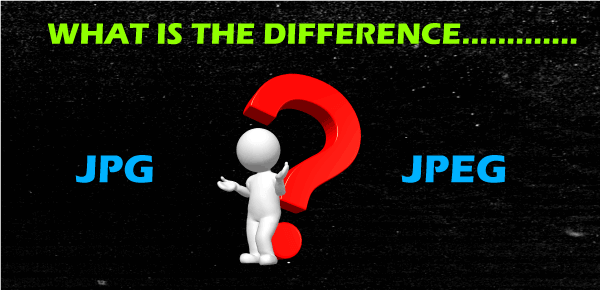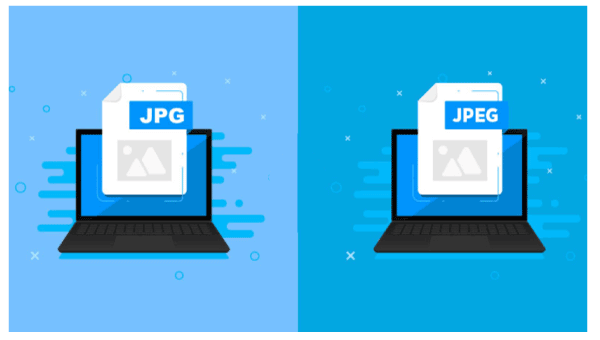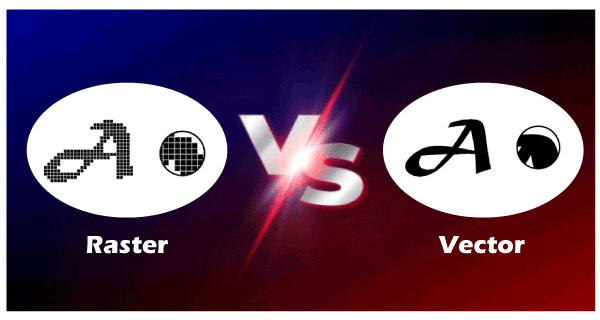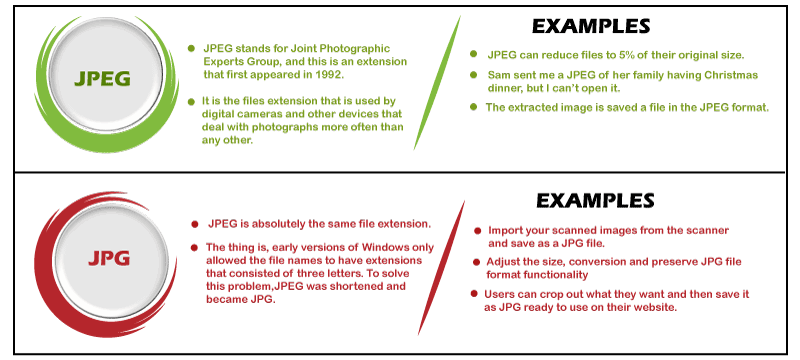Difference between JPEG and JPGJPG and JPEG refer to Image file formats. The image file formats are not always created equal. In reality, all of them are to tackle a problem that a simple routine could not solve. The JPEG format, for example, was created in response to the fact that image file dimensions were taking up far too much storage capacity. 
The file versions JIF, JPEG, and JPG, like it or not, all apply to the very same element. To comprehend why the file type has many titles, we must first decipher a messy background. JPEGJPEG stands for "Joint Photographic Experts Group." The acronym JPEG stands for Joint Photographic Experts Group. It is a community of specialists who develop computer image specifications. JPEG (pronounced Jay-Peg) photos are images created using this format. JPG is the popular shortened version of JPEG. The Joint Photographic Expert Group (JPEG) is a standard image format for digital photographs that were produced and generated by digital photography. The International Standardization Organization (ISO) and the International Electro technical Commission (IEC) have formed a collaborative working party called the Joint Photographic Expert Group. It is a high-quality compression technique for graphic files. It is most often found for the file extension.jpg or.jpeg and is commonly used to reduce the size of digital files. The sub-committee that helped create the JPEG Interchange Format (JIF) type was responsible for identifying the pdf file. The original JPEG specification was introduced in 1992, which is used for many earlier patents and research papers drafted by ITU-T and Joint Photographic Experts Group. Technically, the JPEGs are 24-bit large raster images with 8 bits with each RGB color stream. JPEGs cannot embrace clarification, and there is no need for an alpha channel because they can support over 16 million colors. Furthermore, due to lossy compression algorithms, a portion of the data is lost when you save an image as a JPEG. As a result, the file consumes 50-75 percent less disc space than standard formats such as BMP, with little or no loss of image quality. While using the JPEG file for compression techniques, keep the following points in mind:
Benefits of using the JPEG format:
JPGThe Joint Photographic Experts Group (JPEG) created the JPG file type as a format for professional photography. JPGs reduce digital images by minimizing portions of images to blocks of pixels or "tiles," similar to how ZIP archives find layoffs in archives to compressed data. It was developed for storing massive photography image files in relatively narrow spaces, not for photo editing as JPG compression has the unfortunate consequence of being irreversible. Since their ability to be compressed too far, JPGs became the de-facto reference picture for the internet. Dependent on the settings, a standard JPG can be condensed at a ratio ranging from 2:1 to 100:1. JPGs became the only feasible way to transmit picture data back while the internet was dial-up. However, due to JPG's lossy composition, it is not an ideal format for storing art files. Even the best quality level for JPG is compressed and can subtly alter the appearance of your file. Anti-aliasing in JPG makes it unsuitable for typography, crisp lines, or even images with clear outlines since they are often distorted or splattered out. What's more, this loss will build up over time-saving different copies of artwork can result in deterioration with each saves. Even so, since JPG is such a standard file format, it's common to see this stuff saved as JPG. To counter this critical problem of performance depletion, the Joint Photographic Experts Group developed lossy compression JPG software. However, the JPEG-LS norm was not overtaken due to dial-up rates and a generalized loss of enthusiasm in elevated, non-degrading files. However, users can install plugins to open and transfer lossless JPG2000 files, and specific applications, such as Apple's Preview, can read and transfer JPG2000 files right out of the package. In comparison to the 8-bit bitmap, JPGs support 24-bit RGB, CMYK, and grayscale files. In JPGs, the use of CMYK color space may not be considered. It's also worth noting that grayscale JPGs don't compact quite as much as color JPGs. When using photographs for your blogs, product profiles, and blog posts, you've already come across various image formats. Even though you don't need to hire an "image expert" to operate pictures, it's a good idea to become aware of common file types like JPEG and JPG. Let us go through the JPEG and JPG file formats further to understand the differences and similarities between them! JPG and JPEG are the same things. We can say that they are almost identical. So, why does anyone bother to read this post in the first place? I'll remind you what happened. 
In earlier versions of Windows, the JPG file format was used, while the operating system only supported three-letter formats: PNG, JPG, and GIF. It could not apply additional letters to the file format name because the system would not support it. With the release of newer operating systems, the framework has supported four-letter file formats, allowing the missing "E" to be added and JPG changes to JPEG. On MacOS and Linux, though, the situation was different, and users could also use JPEG rather than JPG. JPEG vs. JPG: Which is Better, Vector or Raster?
Now that you know this little-known truth about JPEG and JPG, it's time to figure out if they're rectangle or vector files. The graphics you see here on your computer monitor are made up of either raster or vector pixels, two image forms that makeup computer animation.
Can Both JPEG and JPG Efficiently Support When Saved?No, it's not true. When saved to a local PC, all of these image types lose a few of their accuracy. JPEG is an image format for lossless compression, which we described previously in the post, and since JPEG and JPG are just the same, the pressure method refers to them. Remove the "E" from JPEG, and you have JPG. The only distinction between JPEG and JPG now is the "E" in the center. The file program was initially known as JPG because the older Windows versions couldn't handle the extra letter, and now that it does, it's known as JPEG. Regardless of what you call them, JPEG and JPG files are commonly used by website owners since they are smaller and load quickly. As a result, websites load quicker 
They are a technology image format. A response is saved in .jpg or.jpeg format. Except for the group of entries used, there is no distinction between JPG and JPEG. For images, JPEG is the most widely used format. It's handy for color photos or pictures with a lot of blends or slopes. Even so, it is not ideal for rough edges and can cause blurring. It is because JPEG is a lossless compression tool for digital imaging. It ensures a slight lack of clarity due to compression when storing a file in JPEG format. As a result, JPEG is not the best format to use if you need to make frequent edits and re-save the file. Because of compression, there is a slight lack of efficiency with each re-save. If only a few edits are made, and the file is stored in a high-resolution format, the quality failure compared to compression is mainly insignificant. On the other hand, Macintosh owners were not limited to three-letter configuration files, but they chose '.jpeg.' Windows finally started to embrace '.jpeg' as well, thanks to enhancements. However, since many people were still not familiar with the '.jpg' file extension, the third and fourth file extensions continue to be widely used. Since several people were Windows' users, the '.jpg' format is still the most widely known and used. To prevent misunderstanding, imaging programs like Adobe Photoshop save all JPEG files with the ".jpg" suffix on both Mac and Windows.
Next TopicDifference Between
|
 For Videos Join Our Youtube Channel: Join Now
For Videos Join Our Youtube Channel: Join Now
Feedback
- Send your Feedback to [email protected]
Help Others, Please Share










